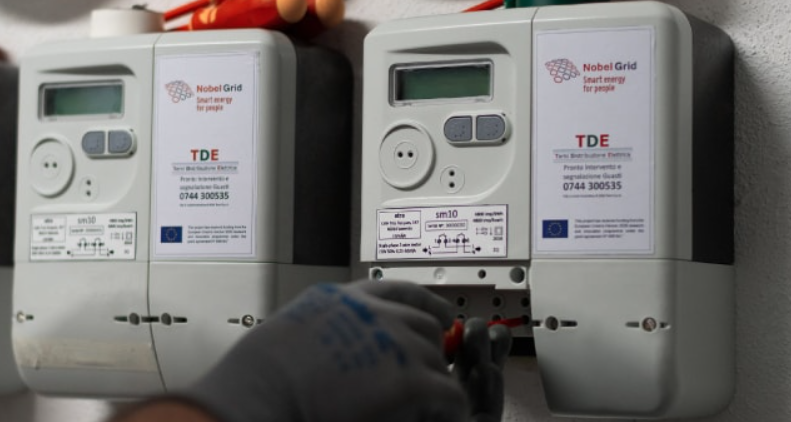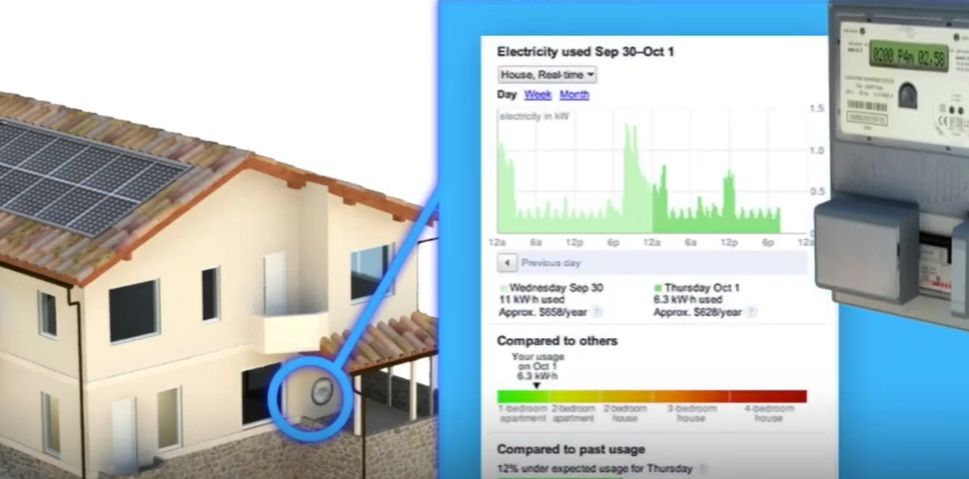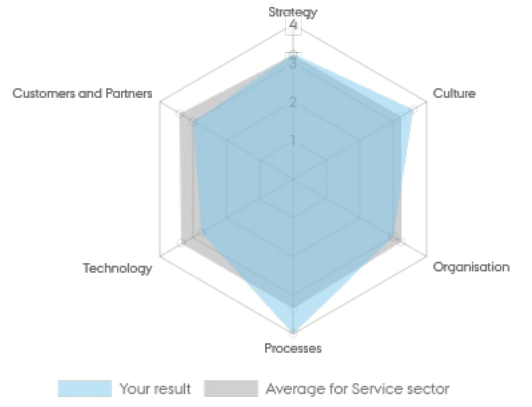
GoodLife Technology
ID: 4482
15. september 2022
Virtually engaging software facilitates interactive exercise for physical rehabilitation.
ID: 4420
18. juli 2022
ASM Terni S.p.A. is a multi-utility company that specialises in water, gas, electricity, and environmental services. The company is public and fully owned by the municipality of Terni, Italy, where it was established in 1960 and currently employs 350 people. ASM generates a yearly turnover of ~50 million euro and has been granted the license of municipal Distribution System Operator (DSO) due to the longstanding experience, know-how, and capabilities as multi-utility operator. As DSO, ASM delivers about 400 GW hours yearly to the 100,000 citizens of Terni, of which 50% of the distributed energy is collected from renewable energy resources.
ASM continuously engages in pioneering actions aiming to modernise utility services and infrastructures and is considered a central pilot site in Europe to test innovative solutions, practices, and technologies in real world scenarios. A recent initiative of ASM’s R&D unit is the introduction of a new generation of electricity metering devices that leverage novel ICT and IoT technologies. These devices are called Smart Meters. At present, the IoT Smart Meters are prototypes that are being tested in pilots to validate essential parameters of the solution, such as power quality flexibility, security, and privacy.
ASM is exploring the potential of the solution to cater the needs and demands of a variety of customers and users. Customers are defined here as large-scale DSOs and ESCOs (energy service companies), such as retailers and aggregators. Users, or prosumers, are defined as private households and companies. At present, ASM has deployed about 200 IoT Smart Meters at the locations of a varied sample of users in the low-voltage distribution power network.

The incentive of ASM to develop their IoT solution derives from the global sustainability agenda and ambition to increase penetration of renewable energy sources. This agenda has raised the topic of smart grids as a driver for solving current challenges faced by DSOs and facilitate a transition towards a future-proof electricity domain that is clean and efficient.
“The main problem, responsibility actually, of the DSO is to secure, supply and provide balance in the grid”.
Francesca Santori, Principal Researcher, ASM Terni (R&D)
The challenges of the domain derive from the traditional concept of the electricity value chain. Historically, energy has been produced in large factories in a unidirectional flow (from central power plant, to voltage transformer, to distribution substation, and finally, to the user). Today, users are increasingly taking over production as they have become able to generate renewable energy at their own location. However, this energy needs to be transformed into electricity, which then requires a reverse flow of energy (i.e., from user to voltage transformer). The challenge here is that the traditional distribution infrastructure (the cables and the substations) does not facilitate bidirectional energy flows. If the produced energy is not consumed locally, it will cause over-voltages in consumer buildings and severe damage to the transformers. Essentially, production and consumption must be in balance.
“But to reach this goal we need different devices. We need real-time devices! …the Smart Meters are the tip of an IoT architecture that enables this goal and the use of energy in a sustainable and flexible way”.
Francesca Santori, Principal Researcher, ASM Terni (R&D)
The IoT Smart Meters can help DSOs in managing the power network, delivering real-time availability of consumption data, online observability of the network, historical data to define baselines, and proper tools to perform analysis, all which contributes to balance energy production and consumption.
Traditional metering devices do not facilitate any of the advantages of smart meters, as they are not IoT equipped and do not use open protocols. Therefore, these devices are able to collect data only one time per month, providing basically no information on the users’ energy supply and demand, and therefore no insight on optimal management of the power network for DSOs to act upon. Traditional devices have essentially become obsolete. For that reason, the new generation of IoT Smart Meters developed by ASM are key components in enabling the transition and accelerate the spread of Smart Grids, contributing to more secure and stable grids, cheaper energy prices, and the integration of renewable energy production.
“In our opinion, the IoT is the enabler instead of the driver.”
Tommaso Bragatto, Research Engineer, ASM Terni (R&D)
Although ASM’s IoT Smart Meters are still prototypes per definition, they are in principle ready for commercialisation. However, due to novelty of the technology, the solution does not yet comply with national specifications for cyber security, and further commercialisation awaits approval from Italian authorities.

The main function of energy metering devices is to measure the amount of electricity consumed by users for control and billing purposes. ASM leverages IoT to provide a solution with this main function based on near real-time data availability.
ASM’s solution is based on the ‘Unbundled Smart Meter’ concept [1], which relies on an architecture that consists of two modules:
The internal communication between SMM and SXM can occur through a wired Ethernet connection, WiFi, or 3G. The external communication between an IoT Smart Meter and a grid actor, relies on a 3G connection and to share the data securely, an integrated VPN[2]. This is an open multi-protocol VPN that offers users different ports to establish a secure network connection, which is essential to ensure interoperability for all stakeholders (for example the DSO, for metering management, as well as external partners for maintenance, configuration, and software updates).
On top of the secure network, a MQTT [3] communications protocol sends the high volumes of data to the cloud where a centrally managed platform processes and stores it. However, if local processing capability is requested by the customer, edge computing functionalities can be integrated to the Smart Meter.

The information gathered by the IoT Smart Meters is interfaced via a web-based application. Depending on the requests of the stakeholder, the software offers customised dashboards that present relevant insights. For example, for DSO, near real-time data and algorithms that enables forecasting and immediate awareness about the status of the grid can be offered; for ESCOs, aggregation data on daily or monthly basis is available; and for end-users, consumption overviews as well as basic analytics to understand their use of energy are available through IoT Smart Meter interfaces.
The software is a decision support software that, based on the real-time insights provided by the data, supports Smart Grid stakeholders through the following features:
The range of features support complex decisions through abnormality detection based on Machine Learning (ML) algorithms as well as Artificial Intelligence (AI) functionalities in management of energy balance and quality. The IoT Smart Meters are further able to integrate with smart appliances and services in the same building due to the applied multi-protocol, as well as support other emerging technologies such as block-chain, micro-grid control participation, and federated ML hosted locally on IoT nodes.

The development of ASM’s IoT solution is an obvious contribution to the societal ambition of enabling Smart Grids and accelerate the transition towards a civilization supplied by sustainable and clean energy.
“It is something that can help to improve the sustainability and efficiency of our business, which is to supply energy and provide secure supply.”
Francesca Santori, Principal Researcher, ASM Terni (R&D)
The IoT Smart Meters enable grid management in general terms of energy flexibility alteration, demand response, asset management, and predictive maintenance. Ultimately, these capabilities solve some of the key challenges in the domain at present, increasing security of supply and quality of service, and minimising the risks of imbalance and overvoltage in the grid. All enabled by the IoT capability of the IoT Smart Meters to collect, process, and share data when it is needed.
“Because we can manage real-time data, we can in the future manage flexibility in our grid. This is really important!”
Francesca Santori, Principal Researcher, ASM Terni (R&D)
Although the IoT solution is not yet commercialized and outcomes not yet monetised, ASM has acquired much value from the process of developing and testing the Smart Meters. One major outcome is the ability of the solution to support the human intelligence and decision making of the organisation with factual data. The expertise of humans is fallible, but with the IoT Smart Meter data, ASM has a reliable countermeasure to manage the grid, which is a significant benefit being the municipal DSO.
“Understanding and managing the grid – that is the added value.”
Francesca Santori, Principal Researcher, ASM Terni (R&D)
For users of the solution, the derived value outcomes differ and are closely connected to the distinctive traits of that specific customer or user:

“With this system we can really use the energy when it is produced.”
Francesca Santori, Principal Researcher, ASM Terni (R&D)
At present, if energy users have solar panels, a wind turbine, or hydro technology at their residence, they rarely have the instruments to control the production and the consumption in real-time. The IoT Smart Meters bridges the energy resources on the demand-side with the supply-side, empowering citizens to invest in renewable energy sources as well as to intensify services of the Smart Grid, allowing them to make sustainable contributions to reach a low carbon economy.
“So it is quite important also for the environment, this IoT revolution.”
Francesca Santori, Principal Researcher, ASM Terni (R&D)
ASM has undergone an extensive process of refining their IoT solution, and the company has had many learnings along the journey of tapping into a domain in progressive transformation, with several learnings having potential transmissible value for other actors in the IoT ecosystem.
Numerous of the company’s most crucial learnings derive from participation in R&D projects and relate to comprehending the capabilities and challenges that IoT and data management brings to the electricity domain. The development of the IoT Smart Meter was initiated as part of the NobelGrid project [5] and proceeds today as part of the WiseGrid project [6]. A major encounter of the new meter generation is the ability to enable communication between hardware and all the necessary grid actors – while on the user side preserve privacy and security aspects to support general data protection regulation rules.
“A key aspect is the relationship with authority regulations as well as the national and international standards.”
Tommaso Bragatto, Research Engineer, ASM Terni (R&D)
Moreover, the new generation of IoT Smart Meters leverage a variety of open communication channels, whereas the traditional devices use only PLC [7], which makes integration and interoperability – both at ecosystem and at device level – more complex. Hence, ASM has indeed learned the importance of aligning IoT solutions to existing the standards and regulations in the domain in order to make commercialization a feasible future scenario.
“There are so many bricks to this scenario, and it is important that in the future,
all these develop altogether.”Francesca Santori, Principal Researcher, ASM Terni (R&D)
ASM considers a number of points to be vital for the success of their IoT solution so far. Taking departure in the journey of development and validation, these points are compiled into a list of recommendations below:
1. Enablement through collaborations
“Our important feature is that we are strictly collaborating with our colleagues in the industry sector, so we can bring innovation at the home of our customers.”
Francesca Santori, Principal Researcher, ASM Terni (R&D)
Collaborations and synergies in the ecosystem allow ASM to validate their solution in real world scenarios, and to be close to the customers and users throughout the entire process of development, ensuring that the solution perfectly fits market requirements.
2. Define the hardware platform of the solution
The use of an engineering-focused and industrially suitable computation unit (i.e. the BeagleBone open hardware single-board computer) has proved essential to the applicability of ASM’s solution. Hence, it is vital to allocate time to identify the technical requirements of an IoT solution and thoroughly study how various hardware components respond to these requirements.
3. Take any possibility to collect data
Do not miss out on any opportunity to collect data. ASM highly recommends to document and explore as much as possible: processes, activities, behaviour, developments etc.
“Basically, the data could support additional services and enable additional features in the future.”
Tommaso Bragatto, Research Engineer, ASM Terni (R&D)
4. Balance technology and humanity
“It is important to be able to take control of the technology from the human perspective.”
Francesca Santori, Principal Researcher, ASM Terni (R&D)
Systems might collapse and connections might be disrupted and then human action is indispensable. Furthermore, humanity is needed to balance the use of novel technologies and to evaluate it from an environmental perspective, as the enablement of these technologies (e.g., 5G and block-chain) requires significant amounts of energy.
“My general recommendation is not to be slave of the technology.”
Francesca Santori, Principal Researcher, ASM Terni (R&D)
Looking towards the future, ASM are optimistic that the IoT Smart Meter solution will become a transformational success that contributes to the sustainable future of our planet.
“Energy is close to the life of people – we need energy for everything! And having tools for improved management of energy, for sustainable energy, is really interesting and the future for our world.”
Francesca Santori, Principal Researcher, ASM Terni (R&D)

ASM Terni assumes a mediocre level of digital maturity with an overall score of 3.27. The score indicates that the digital capabilities of the company are vastly mature, and that they perform close to average for the sector.
The Digital Maturity Assessment Tool is copyrighted by Associate Professor and PhD Annabeth Aagaard, Director at the Interdisciplinary Centre for Digital Business Development, Aarhus University. To get the digital maturity of your company mapped out, click here.
[1] Bragatto, T., Cresta, M., Kalogiros, C., Paulucci, M., Santori, F., Sanduleac, M., & di Carlo, V. S. (2019, June). Innovative Tools for Demand Response Strategies: a Real-Life Experience. In 2019 IEEE International Conference on Environment and Electrical Engineering and 2019 IEEE Industrial and Commercial Power Systems Europe (EEEIC/I&CPS Europe) (pp. 1-6). IEEE.
[2] VPN (Virtual Private Network): a secure connection between the user and the internet, where all data traffic is routed through an encrypted virtual tunnel.
[3] MQTT (Message Queuing Telemetry Transport): a lightweight open messaging protocol designed for low-bandwidth, high latency, unreliable networks.
[4] OpenADR (Open Automated Demand Response): an open, highly secure, and two-way information exchange model and global Smart Grid standard, created to automate and simplify DR.
[5] NOBEL GRID is developing, deploying and evaluating advanced tools, ICT services and business models for all actors in the smart grid and electricity market, in order to ensure shared benefits from cheaper prices, more secure and stable grids and cleaner electricity. Part of the H2020 programme.
[6] WiseGRID integrates, demonstrates and validates advanced ICT services and systems in the energy distribution grid in order to provide secure, sustainable and flexible smart grids and give more power to the European energy consumer. Part of the H2020 programme.
[7] PLC (Programmable Logic Controller): an industrial computer control system that continuously monitors the state of input devices and makes decisions based upon a custom program to control the state of output devices.

Copyright notice: © 2020 – 2023 EU-IoT Consortium.
This material was produced as part of the EU-IoT project, grant ID 956671, and is funded by the Horizon 2020 Framework Programme under topic ID ICT-56-2020.
EU-IoT is the European IoT Hub. The EU-IoT project works towards growing a sustainable and comprehensive ecosystem for Next Generation Internet of Things.
Source of origin: Information to document this use case originates from the H2020 call: ICT-56-2020 Next Generation Internet of Things (RIA); Project IoT NGIN 957246; Period: 01-11-2020 to 30-09-2023; EC contribution 8 mil. EUR.
